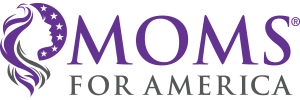
SERVING ON THE SCHOOL BOARD
Training Module Two

SERVING ON THE SCHOOL BOARD
Training Module Two
School Board Training Module Two
Preparing for Success
In this module you will learn some of the nuts and bolts to achieving accountability in your district. While the district may focus on the management of the capitol investments and the personnel you should be laser focused on how this organization operates and how it could be more efficient, deliver better academic opportunities and outcomes as well as be accountable and transparent to the community it serves. As you become familiar with the formal and informal structure of your district you will better understand the input from your citizens and others outside your district.
Action Item
Preparing for Success
If you have any questions feel free to call Dr. Kelly Kohls at 614-695-5533 or email at NSBLC4ed@gmail.com.
Also please view all of our webinar videos, they are packed with a wealth of knowledge, and will help prepare you for success on your school board.
Module Two Resources
2. A. "Organizational Chart".
Why should we use and publish an organizational chart?
In your respect for the district personnel, students and community it is important to clearly define levels
Of authority and proper channels of communication. Within the district personnel should follow the formal lines of communication unless they feel threatened by doing so. For the students it is always helpful but not mandatory for them to follow the lines of authority and communication to resolve any issues, but it is not mandatory. The community often asks who they should talk to about their topic of interest and this published chart can be very useful to them. While this organizational chart shows lines of authority and communication, it is just a guide. Remember you are at the top, you can choose to hear any member of the district, the students and the community. In fact, it is your job to hear from them. If you believe their input, concerns or comments are better placed in the hands of the administration, first inform the person reaching out to you that you think they would be better served if they sent it to …… If this person reaching out tells you, they have already reached out to the chain of command but have not received a satisfactory response that you can choose to take the comments and concerns further yourself.
Organizational Chart
Organizational Chart - Financial
Module 2 A - for Print
2. B. Communicating with your community.
Speaking to your constituents. Messaging
After being elected to a school board many newly elected school board members get a bounty of “advice”. This advice should be viewed with a sceptic’s ear.
After being elected to a school board, many newly elected members get “advice”. This advice should be viewed with a sceptic's eye.
What you may hear:
“You speak with one voice”.
“If a community member, staff or student reaches out to you, send the message to your superintendent or treasurer”.
“Even if you disagree with a vote, you must support it after the vote is taken".
“Don’t air dirty laundry”.
“Remember: you are there to be a cheerleader for your district”.
“Do what the superintendent and treasurer tell you; you hired them, now you have to trust them”.
“You can ask your questions prior to a meeting so the meeting goes smoothly”.
Your life will be easier if you just show up and say yes to everything on the agenda and ask no questions. However, you must act with your principles and your conscience in mind.
Priorities:
Why were you elected?
- To bring oversight to the district to which you were elected
- To communicate with your community all issues related to your district
- To ensure district academic and financial accountability, and transparency with all stakeholders
- Understand and respect the proper roles of the parents, community, and district personnel
- To insist on corrections of the academic and financial failures found inside your district, and report the deficiencies as well as the action plans to correct or improve the problems inside your district
- Protect the students from political ideologies, while insisting they get the best academic experience
- Protect students’ rights to privacy, fairness and safety
- Protect parental rights
Messaging
When offering information, be aware of the way the message will be received, used and abused. You will want to message in ways that it is impossible to disagree.
Example: the district is making the case that more staff is needed.
You found out (see our videos on finding district financials - VIEW THE VIDEO) that enrollment has been declining for a few years so the rationale for more staff does not make sense to you. Perhaps an enrollment study is in order.
Message to rest of the board and superintendent.
“I need more information about what these new staff members would do that is not already being done”.
“Perhaps this administration can consider rolling other tasks onto current positions”. “Consolidations may be in order”. “Please explain in detail why we need more staff”.
“Perhaps we should consider reducing staff that are more directly related to the declining enrollment so we can free up positions”.
“Since we have increased administrative staff while we have had declining enrollment, we should look into a staffing audit done by an independent organization”.
Use facts with emotions – Examples
“Our community is suffering with the enormous increase in gas prices, inflation and chaos in our government, I think we should be mindful of the sacrifices they make to keep us so generously funded now and hope they see it to keep us funded to this magnitude in the future”.
“So many families are struggling to feed their family, to pay their mortgage and to keep their transportation running, it is important that we keep in mind the sacrifices they make to keep this district generously funded. We need to respect our communities sacrifices by being as streamlined and efficient as they have had to be in their home budgets”.
Message to community- give them the facts, enrollment, increasing admin staff while experiencing declining enrollment or a increased % rate of admin versus a % change in enrollment. In the consideration of being the fiduciary agent your tasked with further analysis and investigations. Remember, your job is to be honest, clear and factual and to stop the district use of school speak to hide the facts. Your narrative must use common words.
Step raises- automatic annual raises that exceed the rate of inflation.
Base raises- are added to this automatic step raise and bumps the whole step schedule by a percentage.
In Ohio, when a district says we agreed to a 2% raise they omit the fact that this 2% is added to the automatic step raises that average 4% per year.
You must message that the district gave 6% raises in the last contract while the community household incomes increased _______% on average over the last ______ years. All while the community households were not able to keep up with inflation (2.5%/yr) – actually losing the ability to sustain their lifestyle. Ask if that is fair?
You can go on to ask for community benefits packages and to compare them to the district funded benefit. Ask if that is fair.
“How can the community be told to fund lifestyles they cannot afford for themselves”
“We have a community with households struggling to survive yet we have been generously funded with their property taxes and income taxes at the state and federal level, it is time to say thank you and we understand the pain you are going through”.
“Perhaps we should put the union contract on the ballot next time since 85% of our budget is for the faculty and staff pay and benefits. Whereas only 15% of our budget is used for materials and supplies, transportation, buildings, utilities, books, food, maintenance and so on”.
During negotiations, we were offering less raises than the union wanted so the union president wrote us a letter. This letter used the emotional ploy they are very practiced at. The letter said, “what am I going to tell the single mom with four children who lives in a one-bedroom apartment”?
You see the emotional think is effective for many. My thoughts were, “tell her congratulations, this community is able to fund her salary and benefits at the current level without the reductions they saw in their own household incomes”.
Where to Message
Your school district will provide you with an e mail address. Remember that your written messages may be a public record if they discuss district business. Remember that your district can and does review your emails, can filter incoming messages, and will, without warning, send your private emails to others in fulfillment of a public records request. The searches of your emails by the district to answer public records requests can send the requester emails that do not meet the public request, they will claim, in an effort to be “helpful”.
We suggest that you start an email address of your own district contacts where people can contact you without being screened or filtered out. This school email is also subject to open records act and you must find and submit any records of your discussions of district business to the requester. You will need to determine if the request for your emails is for a valid, specific and time framed subject. If you find personal, private or protected information contained in an email for either a student or community member be sure to consult with a legal authority to see if you need to redact that private information before you send the record to the requester.
Your texts, e mails, voice mails and any other documents shared with others that contain district business are subject to public records requests. However, your discussions about your family, neighborhood, vacation etc.… are not district business so are not subject to records requests.
Responding to the news outlets
Never put in writing what you would not want on the front page of the newspaper.
When the newspaper calls you for an interview, tell them to send you their questions in an email and that you will respond in an email. You want to document what they asked and what you said. The newspapers often get your verbal statements wrong then say they will write a correction- I’ve never seen the corrections. Write your response then have a trusted friend review it before you submit.
Shut down your candidate face book page
During your campaign, you likely had a candidate face book page that you used to communicate with your community. You may have notice that trolls and haters could come onto it and take over you’re messaging. During your campaign you can delete and ban the nasty gram posters to control your message but once you are elected, they may claim you are infringing on their rights to redress their government. A few court cases have ruled against an elected representative that banned or deleted posters they disagreed with. It is easiest to shut it down. If someone contacts you on your personal page just message them that they can reach you at (give them your email address). Your personal page should have no district business on it or again they may claim you deleted or banned them.
Your website
We strongly suggest you have a very simple website where you can post your comments about the district. Remember, do not post anything you would not want on the front page of the newspaper. Never allow distasteful information on your page unless you are showing the objectionable content of district curriculum, library holdings or messages from inside the district.
Having your own website allows you to communicate with the masses in your community without having to allow anyone to comment. You should always give your email address so anyone who wants to contact you can. Make sure you mention your website address at every meeting so you can stay in touch with your community.
Sections on a website:
- Put your bio, your principles that are a match the community you serve, call it “about us”. Include, your statements about respecting the students, parents and community as well as the district personnel.
- Current and emerging issues:
- Announce the next meeting time, dates, and location. As soon as you get it, post the upcoming agenda.
- Post the agenda with how you voted. Give the vote count.
- If you voted different from the rest of the board or there was a split vote – message why you voted the way you did. Feel free to use facts and your emotions.
- Ask for community and parent input on upcoming decisions.
Who are you messaging to?
Community members versus stake holders
Who is in your “community” and who are “stakeholders”? Your board policy may define who can speak at board meetings. Board policies often limit speaking at board meetings to those who live in the community. The claim is that those that live in the community are the only stakeholders because they pay the local property taxes and might have children in the school district. It is important to note that this ideology may be challenged in the courts, and we believe that the district will lose this case. Local property taxes are only one of several revenue streams school districts use to fund the district. More than likely, your district operates predominately on State and Federal funds more than local property taxes. Using this insight to determine who gets the right to speak at board meetings means that the district should consider anyone who pays state and federal taxes as stakeholders as well. The board can invite anyone they wish to bring information to the board at and during a school board meeting.
For example, I invited a stellar historian to speak about why teaching true American history is imperative. His name is Larry Schweikart, historian, and retired Professor of History at University of Dayton. Mr. Schweikart authored several American History books. Find them here.
Can a community member yield their time to a designee? The answer is yes.
If your school board does not allow a citizen or a board member to give their speaking time to someone that they invite to speak for them we have confirmation that there are lawyers who will take that case. We believe that the board can not filter what is said or who speaks at their board meetings if they allow public comment at board meetings.
Court case where the school district was sued for not letting someone speak.
In Ohio the school board was sued and lost when they restricted a person speaking at a school board meeting. View The Case
Watch this and see that the speakers has every right to say whatever she wants and this school board member is violating the speakers first amendment rights. This speakers has a great case against this board of education.
A community member, former school board member tells the school board about citizen rights to speak freely.
New York Times versus Sullivan
US Supreme court ruled that our government does not have to like what we say to them but we have every right to say it to them.
Practice your messaging
In this video, Ohio Gun Owners, Chris Dorr uses rebuttals to a radio interview and program.
Notice how he rebuts with clear, concise narrative. You should not use profanity.
He uses his followers, Ohio gun owners, and not himself as the entity asking the questions.
He always represents himself as the representative to the OGO membership.
Practice This
– You are the representative of your community, always speak as just that.
– Speak about what your students deserve, have earned and are being funded to receive.
– Speak about how generous and supportive your community has been. Speak for the tens of thousands of citizens who are struggling to make ends meet in their own households while paying taxes that never stop growing at enormous rates.
– Speak about how your households rightfully expect your district to protect “CHILDREN” from influences that deprive them of their childhood, that victimizes them and uses abusive socio emotional concepts as standard curriculum.
– Speak about why you were elected and that you take this job very seriously. In doing your homework you are finding more and more pediatricians, social workers, teachers, and child psychologists warning that this woke curriculum is causing children trauma. That you will do your best to expose it and protect children with its removal.
Write up your messages and practice them so you can accurately convey your message to your community, your district staff, and students.
Review the Sample Communication
Module 2 B - for Print
2. C. What is "Transparency"?
Ohio Department of Education Transparency
The Ohio Department of Education has become the greatest source of proof that our Ohio government is hiding information from taxpayers. Before Ohio public school districts go on the ballot, important information about them is no longer available on our government websites. INTERESTING accident?
Just one example. Kenston School district is on the ballot for new money, but somehow taxpayers can no longer see their report card data.
Kenston report cards
Compare the 2016-2017 Ohio report cards with 2017-2018 report cards. Interesting that back in 2016 -2017 and all years prior, ODE had far more information on their website about each district’s performance. While so called Republican Governors have been in charge, the amount of data and facts about your district’s performance has been drastically reduced. WHY??? What happened to transparency?
When a school district suddenly begins getting A’s and B’s after consistently getting far lower grades you’d like to understand what changed. But the data behind the report card is no longer published by the Ohio Department of Education. Are the facts being hidden? Why?
Let’s look at an example.
This report includes the data and the grades (scroll down to see all important information).
Now notice the drastic improvement on the 2017-2018 Report Card in just one year? Really? It normally takes several years to improve curriculum and train teachers before a district sees their scores improve.
Again, in 2018 -2019 no details for us to see exactly how the grades were assigned.
Does our Governor and the Ohio Department of Education not want you to see the data? If they presented the actual test scores, would they show that the bar was lowered so more schools could get As and Bs?
When report cards were introduced, they contained a plethora of test, demographic, salary, staffing, and financial data. Over the years much of that has been omitted and much transparency has been lost. Again, WHY?
And now there is a total blackout. There are no report cards at all for the 2019-2020 school year.
Transparency Project
Transparency Project Additional Info
Transparency FOIA Request Example
Goldwater Institute Model
Module 2 C - for Print
2. D. "Children First Budgeting".
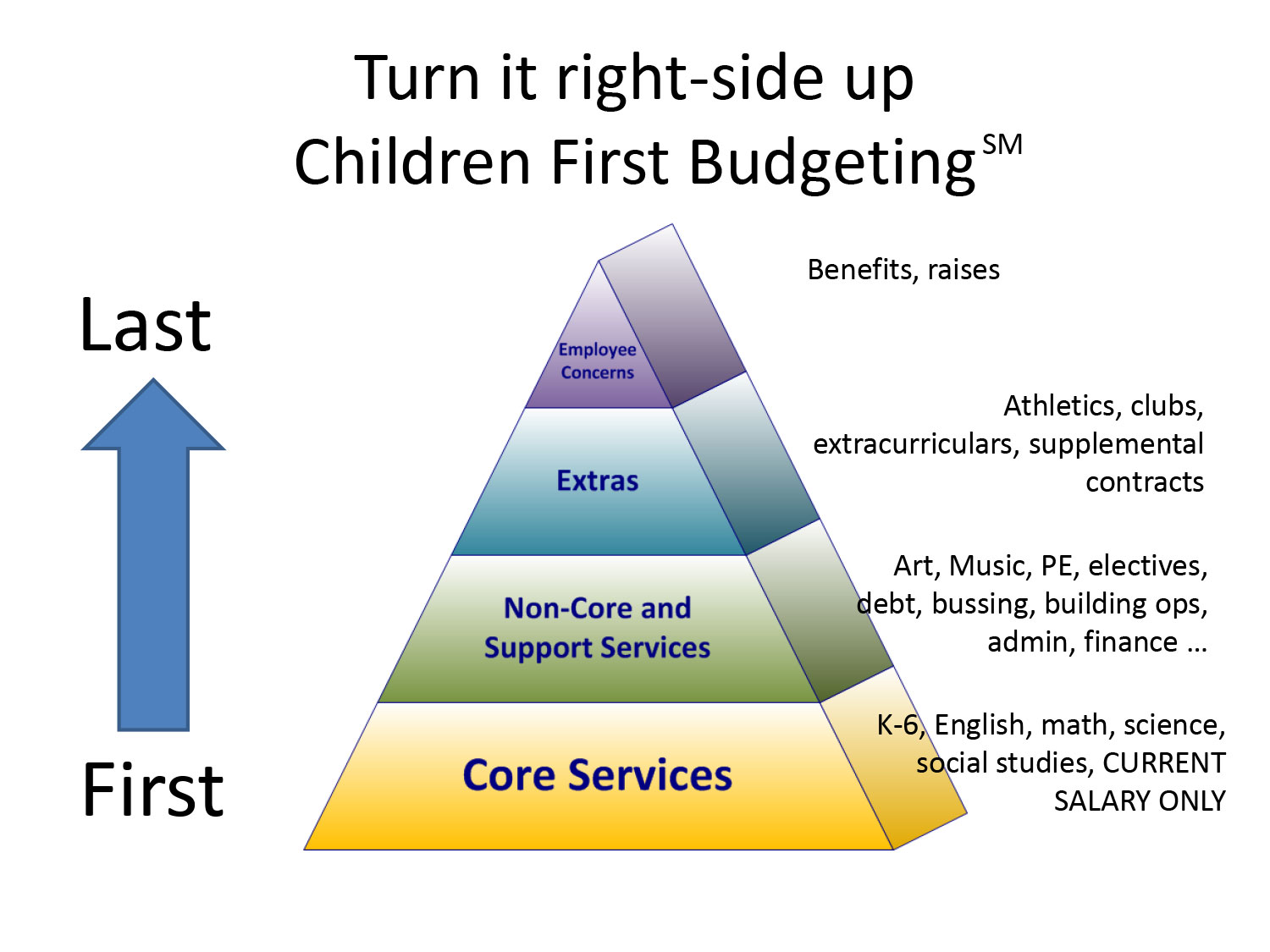
Children First Budgeting
2. E. Understanding your negotiated agreements.
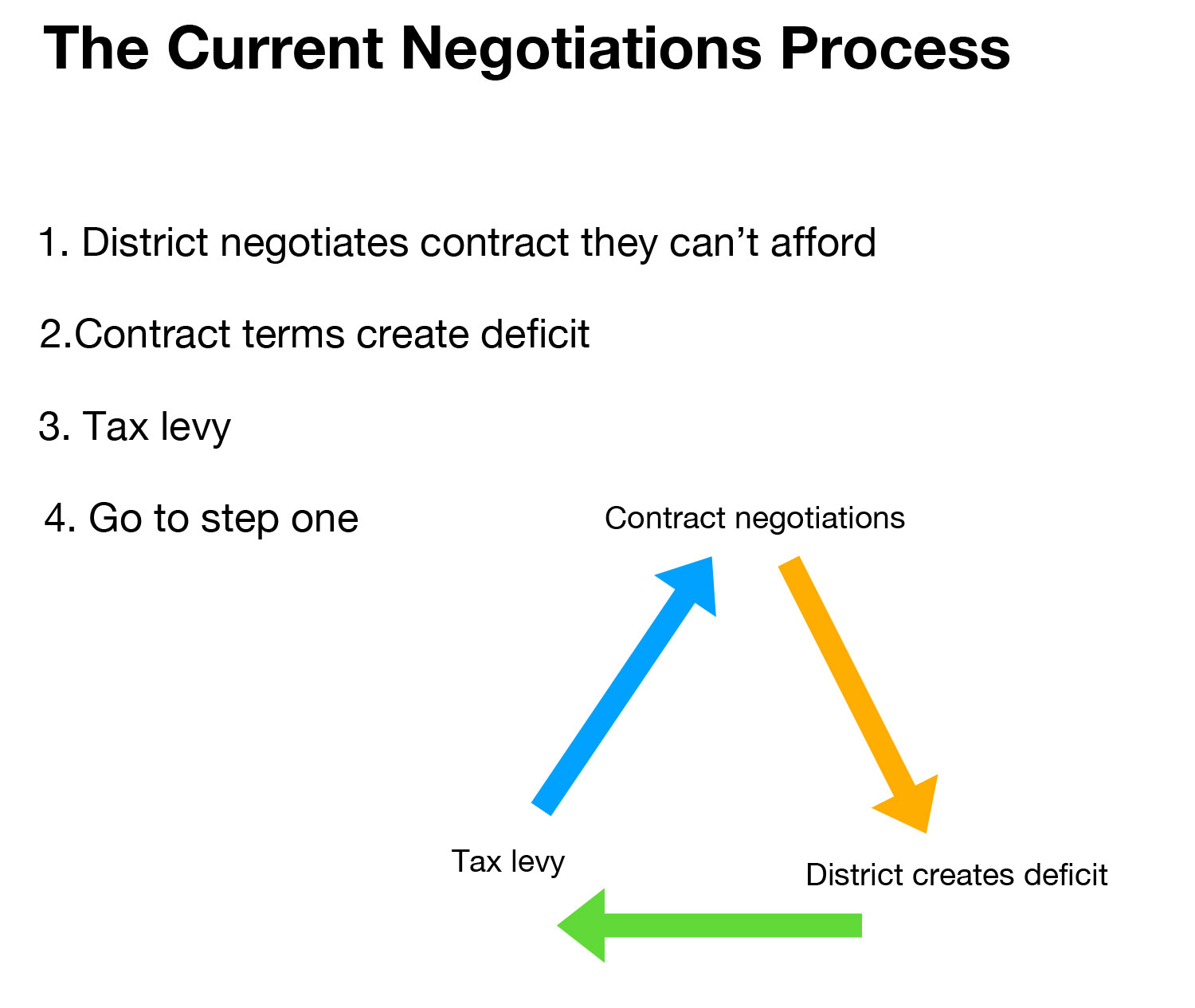
Current Process
2. F. Legal counsel and memberships.
Legal Counsel
Your goal in choosing your board legal counsel should be to choose one that understands their role of assisting the board in managing, directing and protecting your school board. School board legal counsels are not all equal. Some law firms are specialized. Some education law firms specialize in just negotiations, special needs students or suspensions and expelling students. Some school board firms can handle all of the board's needs. Get a copy of your contract with your legal firms(s) to make sure you can contact them. Some school boards write a contract with legal counsel that only allows contact with the board president. If your contract does not specify one contact person, you are allowed to reach out to them to ask questions and get advice. There are numerous law firms that you could consider asking for assistance if the need arises. We discovered that our legal firm consultant always seemed to advise us in a way that protected and benefitted the staff and not the students so, we interviewed and hired a new firm. In searching for a new firm, logistics should not be a primary concern because your legal counsel does not need to be onsite often and most issues can be discussed using technology.
School board members are indemnified. Indemnification means that if the district, board or you are sued while in office for something you did, said or enacted as a board member, in your role as a school board member, you are insured. This means that your legal counsel is provided by the district insurance company at no cost to you. If you have any questions about this, please feel free to email your questions to NSBLC4ed@gmail.com
Memberships or attending educational meetings
At your first meeting of the year, called an organizational meeting, each district board votes to set aside funds for you to purchase memberships to education organizations and to attend meetings that aid you in the duties for your job. We feel strongly that these tax dollars are intended for the student's education and that if you chose to become a board member you should pay your own expenses for memberships. School board members are entitled by law to attend educational meetings and conferences with the money they set aside in board funds. The board may have a policy that specifies that the board must vote to agree with your spending on your chosen events. If the board does not allow a board member reimbursement for their choice of educational meetings or conferences the board member has the right to sue their board for discrimination. It is unwise for a board to limit reimbursement or payment for a board member's choice to attend meetings or conferences that they deem relevant for the successful conduct of the board members' service. Again, we advise that doing all you can do to learn how to be a productive board member should be your choice and if at all possible, paid for by your personal funds or by a sponsor.
Understanding Your Legal Counsel
Sample Counsel Interview Questions
Sample Counsel Agreement
Module 2 F - for Print
2. G. Community Input at board meetings.
Who can speak at your board meetings?
Who is in your “community” and who are “stakeholders”?
Your board policy may define who can speak at board meetings. Board policies often limit speaking at board meetings to those who live in the community. The claim is that those that live in the community are the only stakeholders because they pay the local property taxes and might have children in the school district. It is important to note that this ideology may be challenged in the courts, and we believe that the district will lose this case. Local property taxes are only one of several revenue streams school districts use to fund the district. More than likely, your district operates predominately on state and federal funds. Using this insight to determine who gets the right to speak at board meetings means that the district should consider anyone who pays state and federal taxes as stakeholders as well. The board can invite anyone they wish to bring information to the board at and during a school board meeting.
I invited a stellar historian to speak about why teaching true American history is imperative. His name is Larry Schweikart, historian, and retired Professor of History at University of Dayton. Mr. Schweikart authored several American History books. Find them here.
Can the board filter who speaks or what is said? (video of Simon Campbell)
The answer is NO. If the board has a policy that the public can speak, they can set rules as they pertain to the length of time allowed for each person, length of time for all public speaking and in what section of the agenda.
As some school boards have learned, the board may not filter who gets to speak or what topic they chose to speak about.
The board must allow speakers to speak on any subject they wish.
The board cannot- as court rulings imply, tell a speaker not to speak about a specific person, speak on a certain subject, be “respectful” or not to curse. If a board allows public comment they cannot restrict those from commenting or restrict what they say.
Does your board require pre-arrangement for speaking?- is this legal?
Does your board require speaker to sign up in advance or to give name and address? – is this legal?
Module 2 G - for Print
2. H. School Choice.
School Choice Pros and Cons webinar
- Should the government be involved in education? Is this really the best model for children, families, teachers and society?
- Are there other ideas (besides school choice) that could empower parents with educational freedom while keeping the government out of our schools?
- In general do you support or oppose education dollars to follow the student to whichever education source they or their parents prefer?
- Who typically supports school choice and who opposes school choice?
- What are the possible pitfalls to these school choice bills?
- Is there profit involved in school choice?
- Does school choice allow students to get a better education, why?
- How could school choice be bad for students?
VIDEO BIOGRAPHIES

Donna Kreitzberg
Donna is a phenomenal education advocate and a recent school board candidate in Oregon. She is a retired CPA, real estate broker and business and tax attorney. Donna has a Master’s in Management-Finance. She is passionate about education and education choice.
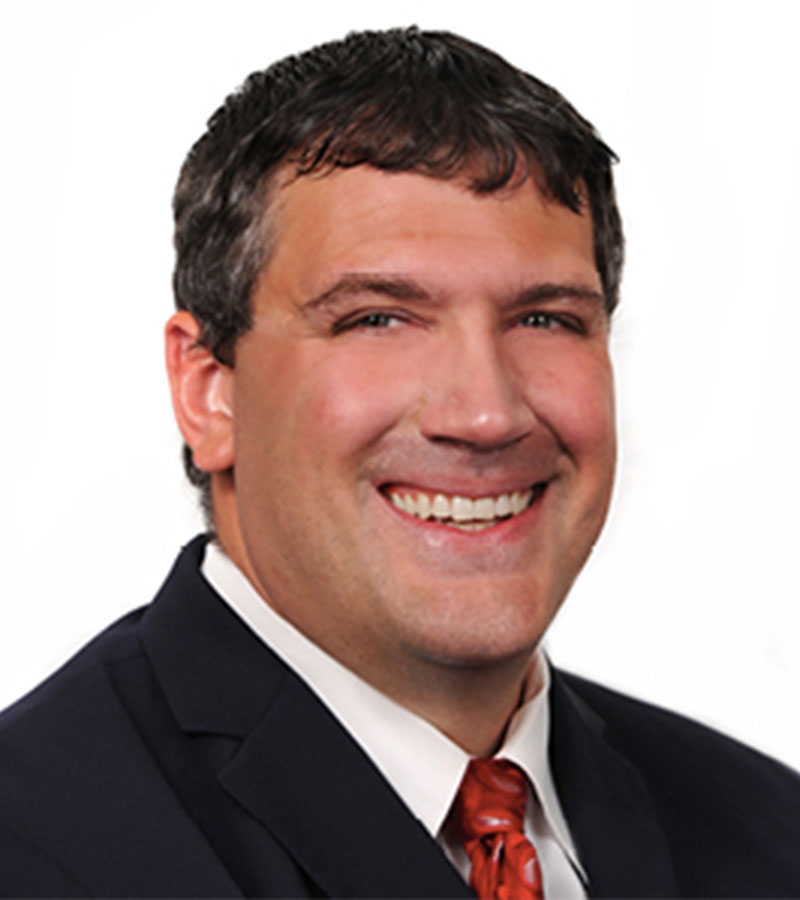
Greg Lawson
Greg R. Lawson is a research fellow at The Buckeye Institute with expertise on Ohio’s budget, local government, state and local taxes, education and education funding, transportation funding, and occupational licensing.
With nearly 20 years of experience working on eight state budgets, Lawson is a recognized expert on Ohio’s budget, and is the co-author of Principled Spending: Using Ohio’s Capital Budget to Benefit Ohioans.
A recognized expert in the school choice movement and on occupational licensing, Lawson is the co-author of Education Savings Accounts: Expanding Education Options for Ohio and Still Forbidden to Succeed: The Negative Effects of Occupational Licensing on Ohio’s Workforce.
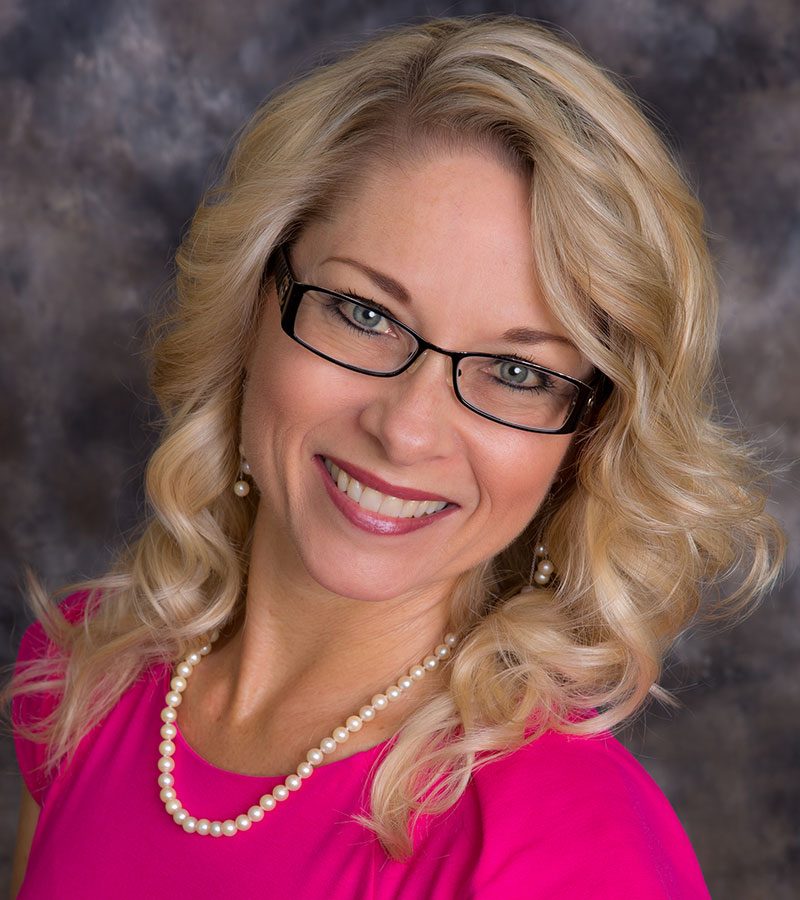
Rebecca Friedrichs
Rebecca Friedrichs is part of a national movement to restore the voices and authority of parents and teachers in America's schools.
As a twenty-eight-year public school teacher, she was forced to fund unions whose politics and divisive tactics degraded her profession, our schools, and our national character.
Her lawsuit, Friedrichs v California Teachers' Association, brought with ten other teachers, was argued before the U.S. Supreme Court in January 2016, and blazed the trail for ending forced unionism for all teachers and government employees in the United States.
Her book, Standing Up to Goliath, told through dozens of powerful personal accounts, is Rebecca’s expose of corrupt and abusive unions.
Rebecca, along with her husband Charles, also founded For Kids and Country a national movement of parents, teachers and citizens uniting to restore our schools and culture.
Rebecca’s editorials can be found in the Washington Times, Washington Examiner, FOX News, and other outlets. She appears regularly on radio and television outlets, she’s the host of a Prager University video on why good teachers want school choice, and she was the second speaker on the opening night of the 2020 Republican National Convention.
Most importantly, Rebecca is a lover of Jesus Chris, the wife of Charles and mother of two grown sons Kyle and Benjamin.
Student Safety
A Case for Arming District Personnel
Empower Moms Education Options
Module 2 H - for Print
2. I. Reasons to avoid school based health clinics.
Top 10 Reasons to Say NO to School Health Clinics
Linda Harvey, Mission America
www.missionamerica.com
Schools have one job: academics. Housing, feeding, clothing, college, religious training and health care for children are responsibilities solely in the purview of parents/guardians.
Governor Mike DeWine recently announced nearly $26 million allocated to 136 new or expanded school health clinics in Ohio. He thinks that’s a good thing. This is, by the way, mostly federal money from the Biden administration’s American Rescue Plan.
The $26 million is on top of hundreds of millions DeWine has allocated over recent years for expanded mental health and substance abuse counseling in schools, and we hear that many new school counselors and social workers are being hired in Ohio school districts.
DeWine says the purpose is to support the “whole child.” But that’s not any school’s role.
School-based health clinics are the practical application of the high-risk “social emotional learning” fad and go way beyond the role of the typical school nurse. They are a terrible idea. Here’s why.
1. Bypassing parent involvement. An onsite clinic offers the ever-present opportunity for your child to receive physical exams and counseling chosen for them, with or without your permission, because a teacher or counselor decides it is “needed” during the school day, when you are not there. This is not fantasy, but in fact an emerging practice of many school personnel, to “empower” children to make their own decisions with little or no parental input.
The reality is, these clinics don’t just fill a perceived need but will create more utilization of such services. Identifying legitimate student counseling needs is valid, but such counseling should be conducted offsite with non-school personnel, consistent family involvement, and well away from the school climate for your child’s privacy.
2. Current lawsuits demonstrate the tragic sexual mischief in many schools. In case this statement seems too radical, just check out the policy statement of the American School Counseling Association on homosexual/transidentity issues. This group, apparently allied with “LGBT” advocacy groups, is totally on board with “supporting” confused students (i.e., approving of these behaviors). The counseling profession leans hard left these days and away from traditional sexual morality. School health clinics are full of such people.
Many educators and counselors are trained to believe any child with gender confusion deserves an instant “yes” to a desired new opposite sex name, new pronouns and inappropriate costuming. They justify this under the school’s “non-discrimination” policy. Families are often viewed as the enemy and the practice of concocting a secret “transgender support plan” – a private document for the student’s file, withheld from parents – is now standard procedure in many schools (we’ve seen copies from Ohio schools). So with more private, “no-parents” health visits, the likelihood of damage to children rises dramatically, as current court cases launched by heartbroken families attest.
3. Pro-abortion and “LGBTQ” groups love school clinics. Doesn’t this tell us everything we need to know about how some students' lives will be changed forever during the school day because of a “health” appointment? Consider the views of NARAL, Pro-Choice America, which considers school clinics a “vital resource.”
At the existing (since 2019) school clinic for middle schoolers in Jackson, Ohio, note that among the list of services available is “reproductive health needs.” Middle schoolers!
Yes, the school clinic may seem like a Godsend on that day when your daughter has a severe sore throat but hard for you to take time off work for a check-up. The health clinic staff is extremely likely in today’s climate to have a conversation with your daughter while she’s at that visit about contraception, her sexual orientation, or the need to get an HPV vaccine, and you may never hear about it.
4. No evidence of improved academic performance. School health clinics are the solution to improved academic success, “readiness to learn,” etc. – so we are told. But do Ohio schools with longer experience with health clinics see improvement on state assessments? And how will we ever know? To accurately make this case, one would have to violate individual student health confidentiality. So the public will never get solid data to back up this claim. The reality may be just the opposite.
5. Consent is sketchy. What schools love is the “blanket consent” signed by parents at the beginning of the school year. This will be the procedure for school-based health care most of the time as well. As we all know, the first weeks of school can be chaotic and the temptation to just sign off and be done with it, is enormous.
But please, parents, stop doing this. We need individual consent for every survey and any encounter with health/counseling staff. And give no consent for any counseling unless you are physically present. Better to keep all appointments off-site.
6. Misdiagnosis. Without parental/family input, any assessment a school gives may be incomplete or flat-out incorrect, especially on mental health issues. The next step is to try to clean up the mess made in your child’s life.
7. Privacy. What are the chances that in the school bureaucracy, with data and many more programs implemented or stored electronically, that your child’s health/counseling information is shared with others? Or that plain-old gossip about your child gets around? Extremely high considering the reckless approach of today’s education progressives, where the trust parents once felt has been severely eroded.
8. Takes advantage of convenience. You are the legal custodian of your child, and his/her health is your responsibility – not the school’s. But for busy parents and those with limited incomes, the temptation to just “let the school handle it” will be enormous. The schools know this. In all fairness, some school staff see children going without regular check-ups, in need of eyeglasses or (in their opinion) vaccinations, and they believe onsite clinics are a help. But health providers are available in the community for your child and parents need to own this issue and be involved in every health care encounter your child has. There are too many risks when it is done otherwise.
9. Low-income/minority families are exploited. School health clinics are said to resolve health care “disparities” among poorer and minority families. But hold on. Here we have the classic patronizing attitude that is frankly, the subtext of most of today’s hyped-up race agenda and pushes more erosion of family dignity and integrity. There are plenty of affordable community health and counseling resources available for families of all income levels. And with parental oversight, vulnerable teen adolescents can avoid being enabled into contraception/teen sexual activity which will limit the achievement of their goals and dreams – just the opposite of what is claimed. Children deserve unfailing parental involvement in health care and parents need to own these decisions and do the right thing.
10. Operates under the school bureaucracy. Even though technically these clinics are associated with the Ohio Department of Health, they end up as part of the school system. What are your options if there’s a medical mishap? Or your child is counseled in such a way that causes a suicide attempt? Beyond the harm to your child, can a parent sue for malpractice? It won’t be easy because schools are shielded from many types of lawsuits. This needs to be clarified.
I urge you to call DeWine’s office and say you do not want expanded or new clinics in our schools. Ask him to put a hold on the federal and state funds. Contact your local school board members and tell them you do NOT want these clinics in your local schools. DeWine’s office is 614-466-3555.
VIDEO BIOGRAPHIES

Linda Harvey
The media ministry of Linda Harvey is an outgrowth of her Christian faith and her background in marketing and public relations. As a former advertising executive, Mrs. Harvey started more than twenty-five publications and has overseen multi-million-dollar advertising campaigns, primarily in the health care field. She was formerly Director of Marketing Communications at Ohio State University Hospitals.
In 1995, she founded Mission:America (www.missionamerica.com) to examine current cultural issues from a Christian perspective.
Linda hosts a weekly radio show on the Salem Media station in Columbus, OH, WRFD (880 AM and 104.5 FM ), www.thewordcolumbus.com, as well as daily commentaries. She is also a frequent guest on national radio talk shows and her columns appear at AFA’s The Stand, World Net Daily, Olive Tree Views, American Thinker and other media outlets. She is also a regular conference speaker.
Mrs. Harvey has spoken on Capitol Hill and testified many times before state legislative committees. She has served on several non-profit boards as well as past terms on the boards of a crisis pregnancy center and a Christian television station. She was twice a reviewer of abstinence sex education grant applications for the Ohio Department of Health. Harvey is the author of two books, Not My Child: Contemporary Paganism and the New Spirituality and Maybe He’s Not Gay: Another View on Homosexuality
Module 2 I - for Print
2. J. Real Estate Taxes.
Real Estate Taxes in Ohio
Real Estate Tax calculation begins with appraised value. Appraised value is based on what the property would sell for at a given point in time. We use a mass appraisal process to acquire property data. Mass appraisal computer software calculates the probable sales price of each property; this is known as the Appraised Value. This Appraised Value is then compared to actual sales to determine accuracy and if any adjustments are needed.
You do not pay Real Estate Taxes on the Appraised Value. You pay tax on the Assessed Value, which is 35% of the Appraised Value. The Assessed Value multiplied by the tax rate produces the tax due. For example, if your property has an Appraised Value of $100,000, the Assessed Value (or Taxable Value) is only $35,000.
There are different types of Tax Levies. We will discuss three of them. Each Levy reacts differently to value changes. They are:
- Inside Levies (Unvoted) – each taxing district can have up to 10 mills of unvoted millage. This millage is unique in that it moves in direct correlation with your property value. For instance, if your value increases or decreases 5%, your taxes on the inside millage will increase or decrease 5%, respectively.
- Fixed Sum Levies –are approved by the voters to generate a specific amount of money. The two most popular Fixed Sum Levies are Emergency Levies, where a school district levies a tax to generate a specified amount of money each year; and a Bond Levy, where a taxing district passes a levy to meet the annual debt requirements related to a project. In each case, the Budget Commission determines the tax rate necessary to generate the amount of money needed to comply with the levy requirements.
- As values increase the rate necessary to produce the specified amount of money would decrease, resulting in no net change to the property taxes.
- If values decrease, the rate necessary to produce the specified amount of money would increase, resulting in no net change to the property taxes.
- Fixed Rate Levies – are approved by the voters and are the most common type of levy. Fixed Rate Levies can only generate additional income if new construction occurs.
- If the value within a taxing district increases due to a reappraisal, the tax rate is reduced so that it generates the same amount of money it did in the prior year. This is done by creating an Effective Tax Rate, which is lower than the voted rate.
- If the value increases due to new construction, there will be no adjustment to the Effective Tax Rate. Additional tax revenue will be realized by the taxing district as the taxpayer making the improvement pays additional taxes.
- If the value decreases due to a reappraisal, the Effective Tax Rate is adjusted upward so that it generates the same amount it did in the previous year, so long as the adjustment does not cause the rate to increase above the voted rate. If an Effective Rate is equal to the voted rate and values decrease, the taxpayer pays less resulting in less money realized by the taxing district.
The following graph shows how different types of levies are impacted by valuation changes:
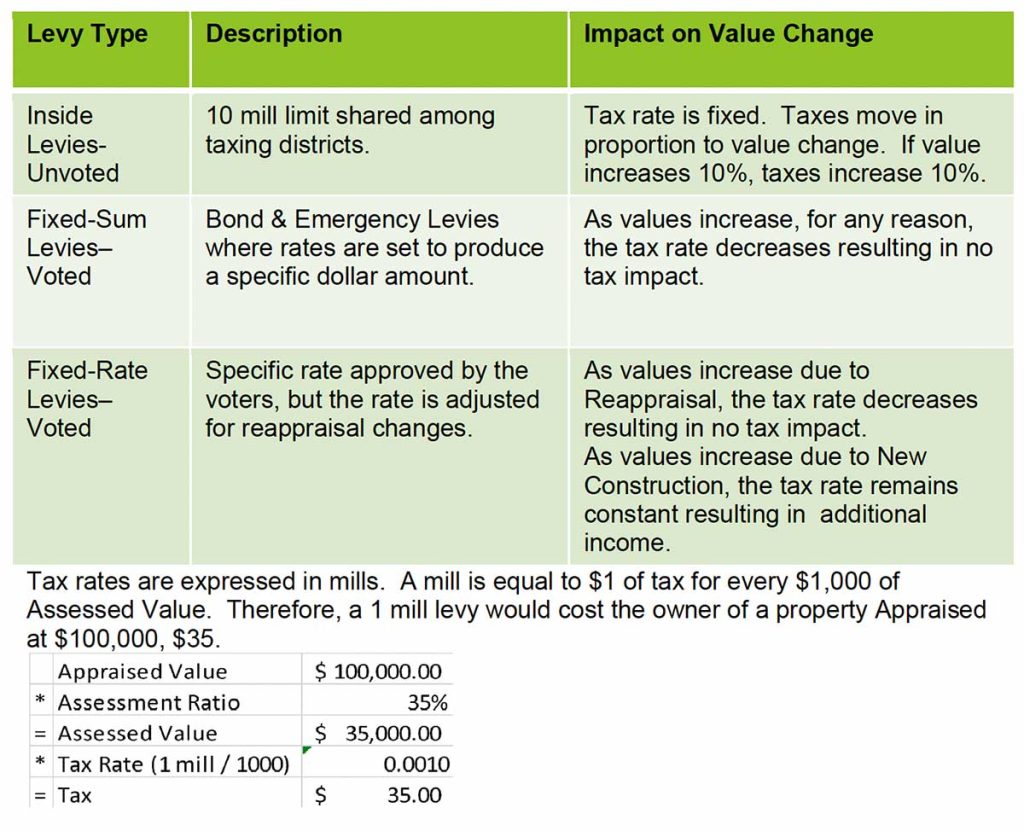
Let us look at how millage rates change as they relate to different types of levies and change in value.
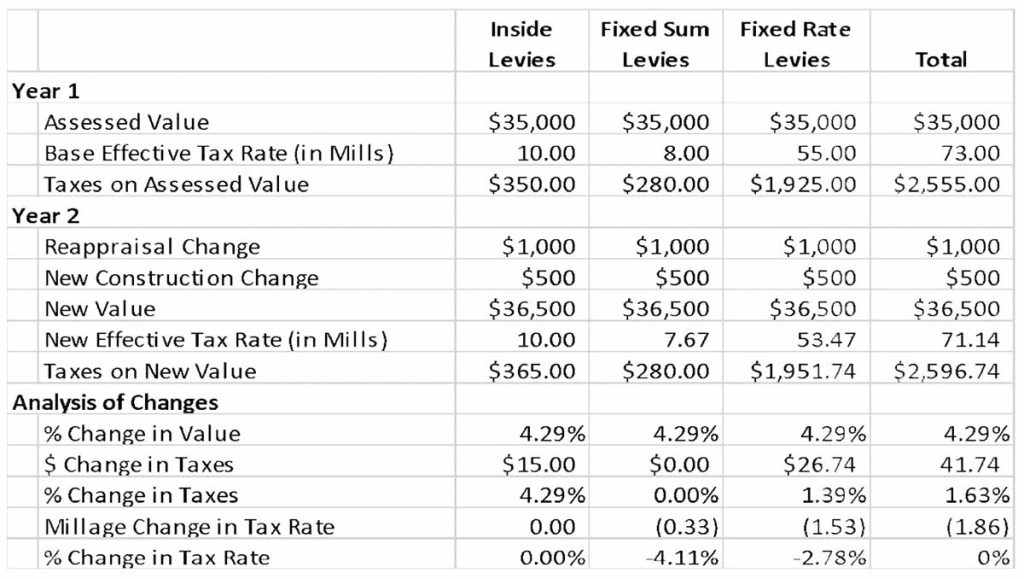
So you can see:
- The Inside Levy tax rate did not change since it is static. There was a 4.29% ($1,500/$35,000) increase in the property value and as a result a 4.29% increase in the tax revenue to the taxing district.
- The Fixed Sum Levy tax rate was set at 8.00 mills by the Budget Commission to produce the amount of money specified in the ballot language. The tax rate was then reduced to 7.67 mills to produce the same amount of money ($280) regardless of the reason for the valuation change.
- The Fixed Rate levy had two adjustments:
- The Reappraisal Change caused the Effective Rate to decrease resulting in no impact on tax revenues ($35,000+$1,000*53.47/1000=$1,925).
- The New Construction Change at the Effective Rate produced the additional revenue ($500*53.47/1000 = $26.74).
- The total change in both rate and revenue is a blend of the impact of all three levy types.
There are two perspectives to consider, that of the Taxing District and that of the Taxpayer.
The fact that taxing districts are not made up of single political subdivisions adds to the complexity. The example above assumed one uniform taxing district where all of the values moved in a consistent manner. In reality, a taxing district is made up of multiple political subdivisions whose values change by different amounts.
Let’s look at Beavercreek Township. Within Beavercreek Township there are five different taxing districts representing nine different political subdivisions. In addition, some township levies apply to certain taxing districts, but not to others. For instance, the township’s road and police levies do not apply to the incorporated areas of the township, but its fire levies do not apply to the incorporated areas except for the City of Beavercreek. This is important because the valuation changes we worked through above would vary for each of those levies. The overall valuation Reappraisal change in the City of Beavercreek was 6.3%, which would be similar to the calculation we did above. The County’s Reappraisal change was 5.48% and Beavercreek Township was 6.6%. Each individual levy would have to be calculated based on these projections making it nearly impossible to answer the question, “What impact will this valuation change have on my taxes”?
First, let’s look at how valuation changes can effect an individual tax bill. Start with assuming there is only one property in Greene County. It is Appraised at $100,000. The County passes a 2 mill fire levy which costs the property owner $70 per year ($100,000*35%*2/1000). The following year a Reappraisal is completed and the valuation increases to $150,000. The tax rate will be reduced to 1.33 mills so that it still generates $70 per year ($150,000*.35*1.33/1000). Notice the valuation increase did not result in a tax increase.
As a second example, let’s assume that after the Reappraisal, the property owner decides to put an addition (new construction) on their property increasing the Appraised Value from $150,000 to $200,000. As we discussed earlier, new construction will not change the tax rate but will result in additional tax. In this case the tax would increase to $93.33 ($200,000*35%*1.33/1000). The county will receive its base of $70 but will also receive additional revenue of $23.33 ($50,000*35%*1.33/1000) from the new construction.
As a third example, let’s assume there are two properties in the county. Each property is appraised at $100,000 and the county has a 3 mill levy with an Effective Tax Rate of 2 mills. We know from our earlier calculation that this levy will cost each property owner $70 generating $140 for the taxing district. A Reappraisal is completed in which property Owner A saw a valuation increase from $100,000 to $150,000. Property Owner B saw a valuation increase from $100,000 to $110,000. As discussed earlier, we know the Inside millage will cause the taxes to increase for Owner A and Owner B by 50% and 10%, respectively.
The tax implications for Fixed Rate and Fixed Sum Levies are not tied to the percentage change they saw in their value. Instead, think of it as a percentage of the total valuation. We know the County has to generate $140. When each Property Owner owned 50% of the total value on which the tax revenue was based, they shared the liability equally. Now Owner A owns 58% of the value and thus 58% of the liability and Owner B owns 42%. This means Property Owner A will see taxes increase from $70 to $81 ($140*58%) while Property Owner B will actually see a decrease in the tax liability to $59 ($140*42%), even though the value of the property increased.
The final table highlights some of these relative tax questions.

We have thoroughly reviewed the impact Valuations and Fixed Rate Levies have both the taxing district revenue and an individual’s taxes. There are, of course, a few exceptions to the rule.
- The effective rate can never exceed the voted rate. If the voters approve a 2 mill fire levy, the effective rate will equal the voted rate. If the Appraised value decreased from $100,000 to $75,000, the levy would go from collecting $70 ($100,000*35%*2/1000) to collecting $52.50 (75,000*35%*2/1000). This is because the effective rate is already collecting at its cap of 2 mills.
- The most significant exception is when a school district is said to be at the 20 mill floor. This happens when the school district has general fund levies voted in excess of 20 mills, the rate can never be reduced below 20 mills. If a school district is at the 20 mill floor and values increase 10%, the tax rate cannot be reduced below 20 mills, resulting in a 10% increase in the taxes. In essence, the school district’s general fund millage acts like inside millage where the percentage increase in value will equal percentage increase in taxes.
- This same exception applies to Joint Vocational School Districts but at a 2 mill floor.
Lastly, there are three property tax credit programs in Ohio, they are:
- Non-Business Credit
- Automatically applies to all agricultural and residential properties
- Provides a 10% reduction on tax levies passed prior to August 1, 2013
- Owner Occupied Credit
- Property must be owner occupied
- Must file an application with the county auditor
- Only certain values qualify. For example, outbuilding do not qualify or if you own more than one acre only the value associated with one acre qualifies.
- Provides a 2.5% reduction on tax levies passed prior to August 1, 2013.
- Homestead
- To qualify you must:
- Meet the same requirement as the Owner Occupied Credit and
- Must be older than 64 or permanent disabled and
- Must have an Ohio Adjusted Gross Income less than $31,800. This amount is adjusted each year for inflation.
- To qualify you must:
I hope this helped you in understanding the interaction between tax value changes and tax rates. Should you prefer to discuss this information, you are always welcome to visit my office at 69 Greene Street, Xenia, Ohio or call my office at 937-562-5065.
David A. Graham
Greene County Auditor
Module 2 J - for Print
